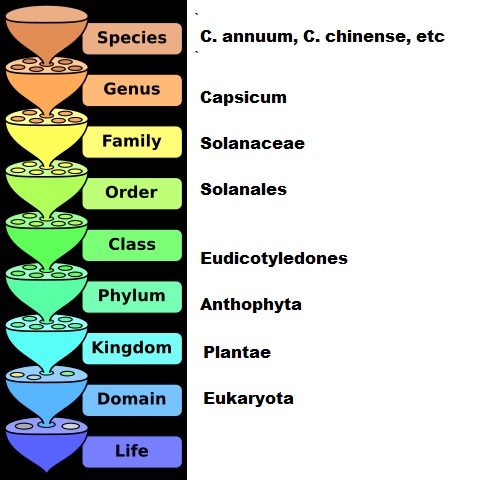-
Do you need help identifying a 🌶️?
Is your plant suffering from an unknown issue? 🤧
Then ask in Identification and Diagnosis. -
✅ Expert and friendly hot pepper grow advice.
✅ The latest information on hot pepper varieties.
✅ Reliable seed trading.
✅ Hot sauce recipes and food safety guidance.
✅ Hot sauce business tips for startups.
🌶️ And more!
It's all here, at The Hot Pepper! The Internet's original hot pepper community! Est. 2004.
You are using an out of date browser. It may not display this or other websites correctly.
You should upgrade or use an alternative browser.
You should upgrade or use an alternative browser.
Fertilizing affecting shape of pods?
- Thread starter stankar
- Start date
I think what peppamang said is the most likely cause of your concern. But I also think extreme issues with nutrition can change what a pod looks like. In human terms, think of the birth defects that take place due to malnutrition. I am fairly sure it can work the other way around. Too much of a good thing n all.
But again, the causes peppamang offered are much more likely unless you have gone hog wild with fertilizer. Ah, another reason to go organic. Slow and steady nutrition without much of a worry about over doing it.
But again, the causes peppamang offered are much more likely unless you have gone hog wild with fertilizer. Ah, another reason to go organic. Slow and steady nutrition without much of a worry about over doing it.
Yes, that's true and I have already experienced that.peppamang said:I don't think so, if your pods are displaying an off-phenotype it might have been crossed by accident. Pests can, herbicide can, and sometimes the first few pods are a little off pheno, so that may be why.
This is what I was thinking about and would like to know, overfertilized plant. In my case I got 3 plants of Fatalii White, 2 of them have very similar pods but the 3rd has pods much smaller but wider. Seeds are from the same pod and most likely not crossed. The 3rd plant has also wrinkled leaves caused by overfertilizing during the bloom stage.AJ Drew said:But again, the causes peppamang offered are much more likely unless you have gone hog wild with fertilizer. Ah, another reason to go organic. Slow and steady nutrition without much of a worry about over doing it.
Third plant:


Other two are like:


BTW I'm using organic ferts Plagron and Mineral Plagron PK13/14
You just brought up another question. Does a single pollen create all the seeds in a pod or just a single seed? I think maybe just a single seed. So since they self pollinate, an insect could bring foreign pollen into the mix and the seeds from a single pod could be different? Notice all the question marks.
Good questions AJ. Honestly, I'm not so experienced so I don't even have answer for the first one, are you sure? I know that genes makes a huge difference, in this case I got another ones. Does the cloning guarantee the same looking pods, or could it be again depending on ferts or the clone itself?
i´ve wondered that same thing.AJ Drew said:You just brought up another question. Does a single pollen create all the seeds in a pod or just a single seed? I think maybe just a single seed. So since they self pollinate, an insect could bring foreign pollen into the mix and the seeds from a single pod could be different? Notice all the question marks.
AJ Drew said:You just brought up another question. Does a single pollen create all the seeds in a pod or just a single seed? I think maybe just a single seed. So since they self pollinate, an insect could bring foreign pollen into the mix and the seeds from a single pod could be different? Notice all the question marks.
My understanding is that each seed is a separate fertilization event. So the same pod could possibly contain both true and crossed seeds.
I would love to read a study on this as i have wondered the same thing. Does anyone have any information on this?BlackFatalii said:
My understanding is that each seed is a separate fertilization event. So the same pod could possibly contain both true and crossed seeds.
I don't have a "study" of crossing but an often used guide is Tomato Gene Basics as both are a member of the Solanaceae Family, see pic below. At the bottom of pg. 1 & 2 are icons to advance to the next page and I think pg. 2 is the most informative for all the members that want to cross pepper A with pepper B. If I'm reading correctly, the F1 pepper has a 50-50 gene pool so it produces pods of a certain phenotype but successive generations, F2 - F3 -etc., have a mix of genes and that is why growing out the seeds with multiple plants to find the phenotype you want and only save these seeds to grow for the next generation. Generally accepted rule of thumb is F8 can be considered pretty damn stable as it crosses into 99% zone, see chart on pg. 2, as plant will never cross into 100%.


